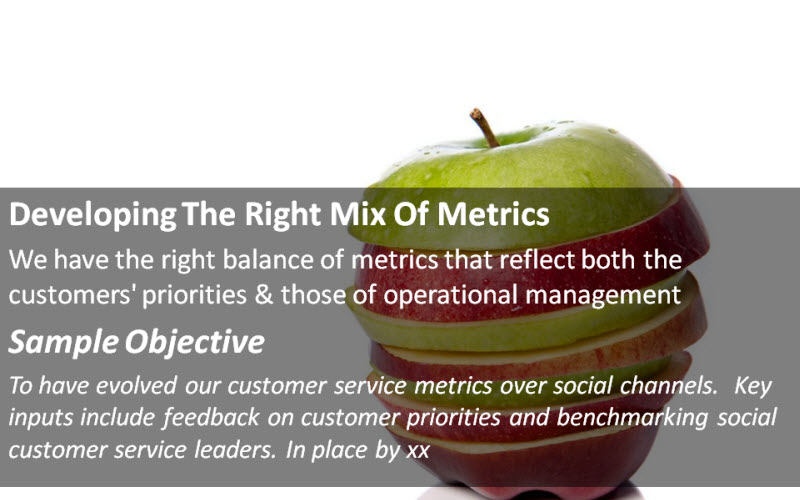
Metrics reflect organisational priorities. As such, traditional customer service has been on a rapid transformation in recent years. Moving from a heavily weighted portfolio of ‘inside-out’ metrics to a rebalancing of what is important to track. For instance, metrics such as ‘NPS’ and ‘customer effort’ have helped provide the ‘outside-in’ view. In other words, a glimpse into the customer experience.
Why does this matter?
‘As you goal them, so they behave’, is a long recognised mantra for change agents. It teaches that people’s behaviour is unlikely to change until they are incentivised and supported to do so. This is why it is so important to develop the right mix of metrics and be prepared to retire any that generate conflicting priorities.
There are other reasons why the right mix of metrics matter. Since social customer service workflows are generally immature and still developing, operational management need to focus on supporting effective performance.
This means ensuring that advisors can concentrate on engagement. The right metrics in this area can help drive out frustrating, non value activities. Note this is not the same as obsessing about Average Handle Time!
Your metrics should be occasionally reviewed to check they are still useful. Many service operations forget to prune. They end up wasting energy and diluting focus as a result. So check that your metrics, service standards and definitions of what service quality means, all promote positive customer experiences. Also check they allow advisors and team leaders to support that ambition without conflict.
Finally, there are some metrics unique to social customer service and need highlighting.
- The visibility of both questions and answers over social channels creates tremendous value beyond the initial interaction. Signposting, SEO and FAQ style promotions help extend the virality of useful service knowledge. This is worth tracking for ROI reasons
- ‘Time To Initial Response’ is vital in order to manage customer expectations. As is the ability to recognise and prioritise urgent needs. This area of performance needs close attention since speed of response is a core driver of customer satisfaction
- Final resolution and low customer effort are also key in driving positive word of mouth. They need operational attention. Hence the need to focus on the ‘number of interactions to resolution’ and use this to seek opportunities to reduce effort e.g. via self service and proactive service delivery
- It is important to recognise that while all customers are important, some are more influential in the size of their own social networks. So any positive and negative comments they make have greater impact
- A final metric is the change of sentiment during the interaction. Although text and speech analytics can do the same job for other channels, their use remains relatively low compared with the ubiquity of social listening platforms which makes common practice possible
Metrics matter. Social is part of a new generation that start with customers priorities. It’s the only safe approach.
Other competencies in the framework for social customer service excellence can be accessed in ‘Related Content’.




